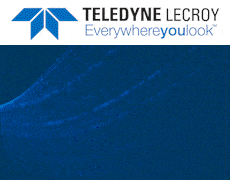Penguin Solutions: Fiscal 2Q25 Financial Results
Revenue up 28% Q/Q, Company announces COO retirement by end of 2025
This is a Press Release edited by StorageNewsletter.com on April 4, 2025 at 2:22 pmPenguin Solutions, Inc. reported financial results for the second quarter of fiscal 2025 and announced the planned retirement of COO and president of Integrated Memory Jack Pacheco.

Second Quarter Fiscal 2025 Highlights
- Net sales of $366 million, up 28.3% vs. the year-ago quarter
- GAAP gross margin of 28.6%, down 20 basis points vs. the year-ago quarter
- Non-GAAP gross margin of 30.8%, down 70 basis points vs. the year-ago quarter
- GAAP diluted EPS of $0.09 vs. $(0.26) in the year-ago quarter
- Non-GAAP diluted EPS of $0.52 vs. $0.27 in the year-ago quarter
“We are pleased with the progress we are making in fiscal year 2025,” said Mark Adams, CEO, Penguin Solutions. “Our results reinforce our capabilities in managing the complexity of AI for our valued customers. Given our strong start to the fiscal year, we are raising the midpoint of our revenue outlook for the full year.”
Quarterly Financial Results
 (1) GAAP represents US Generally Accepted Accounting Principles.
(1) GAAP represents US Generally Accepted Accounting Principles.
(2) Non-GAAP represents GAAP excluding the impact of certain activities. Further information regarding the Company’s use of non-GAAP measures and reconciliations between GAAP and non-GAAP measures are included within this press release.
Business Outlook
As of April 2, 2025, Penguin Solutions is providing the following financial outlook for fiscal year 2025:
Penguin Solutions held a conference call to discuss the second quarter of fiscal 2025 results and related matters on April 2, 2025.
A webcast of the conference call is available from the Company’s investor relations website for approximately one year.
Jack Pacheco to Retire as COO and president of Integrated Memory
Jack Pacheco, EVP, COO and president of Integrated Memory, is expected to retire from the Company on December 31, 2025. The Company has initiated a succession planning process. Mr. Pacheco is expected to transition into a special advisor role if his successor is appointed before his retirement, and to provide consulting services following his retirement to ensure continuity and a smooth transition of his responsibilities.
Mr. Pacheco first joined the Company in 1994 and has served in various leadership roles during his tenure. He remained with the Company from 1994 until 2001, and then returned in 2004 as CFO, a position he held until 2008. In 2011, Mr. Pacheco returned to the Company and served as SVP, COO and CFO until becoming EVP, COO and president of Integrated Memory in September 2020.
“On behalf of the entire company, I want to thank Jack for his nearly 25 years of leadership and dedication,” said Mark Adams. “Jack played a key role in scaling our memory business and strengthening our global operations. We’re grateful for his many contributions and his support through this transition.“
Statement Regarding Use of Non-GAAP Financial Measures
This press release and the accompanying tables contain the following non-GAAP financial measures: non-GAAP gross profit, non-GAAP gross margin, non-GAAP operating expenses, non-GAAP operating income, non-GAAP effective tax rate, non-GAAP net income, non-GAAP weighted-average shares outstanding, non-GAAP diluted earnings per share and adjusted EBITDA. Penguin Solutions’ management uses these non-GAAP measures to supplement Penguin Solutions’ financial results under GAAP. Management uses these measures to analyze its operations and make decisions as to future operational plans and believes that this supplemental non-GAAP information is useful to investors in analyzing and assessing the Company’s past and future operating performance. These non-GAAP measures exclude certain items, such as share-based compensation expense; amortization of acquisition-related intangible assets (consisting of amortization of developed technology, customer relationships and trademarks/trade names acquired in connection with business combinations); cost of sales-related restructuring; diligence, acquisition and integration expense; redomiciliation costs; restructuring charges; impairment of goodwill; changes in the fair value of contingent consideration; gains (losses) from changes in foreign currency exchange rates; amortization of debt issuance costs; gain (loss) on extinguishment or prepayment of debt; other infrequent or unusual items and related tax effects and other tax adjustments. While amortization of acquisition-related intangible assets is excluded, the revenues from acquired companies are reflected in the Company’s non-GAAP measures and these intangible assets contribute to revenue generation.
Management believes the presentation of operating results that exclude certain items provides useful supplemental information to investors and facilitates the analysis of the Company’s core operating results and comparison of operating results across reporting periods. Management also uses adjusted EBITDA, which represents GAAP net income (loss), adjusted for net interest expense; income tax provision (benefit); depreciation expense and amortization of intangible assets; share-based compensation expense; cost of sales-related restructuring; diligence, acquisition and integration expense; redomiciliation costs; impairment of goodwill; restructuring charges; loss on extinguishment of debt and other infrequent or unusual items.
In fiscal 2024, for our non-GAAP reporting, we began to utilize a long-term projected non-GAAP effective tax rate of 28%, which includes the tax impact of pre-tax non-GAAP adjustments and reflects currently available information as well as other factors and assumptions. While we expect to use this normalized non-GAAP effective tax rate through fiscal 2025, this long-term non-GAAP effective tax rate may be subject to change for a variety of reasons, including the rapidly evolving global tax environment, significant changes in our geographic earnings mix or changes to our strategy or business operations. Our GAAP effective tax rate can vary significantly from quarter to quarter based on a variety of factors, including, but not limited to, discrete items which are recorded in the period they occur, the tax effects of certain items of income or expense, significant changes in our geographic earnings mix or changes to our strategy or business operations. We are unable to predict the timing and amounts of these items, which could significantly impact our GAAP effective tax rate, and therefore we are unable to reconcile our forward-looking non-GAAP effective tax rate measure to our GAAP effective tax rate.
Non-GAAP financial measures should not be considered as a substitute for, or superior to, measures of financial performance prepared in accordance with GAAP, as they exclude important information about Penguin Solutions’ financial results, as noted above. The presentation of these adjusted amounts varies from amounts presented in accordance with GAAP and therefore may not be comparable to amounts reported by other companies. In addition, adjusted EBITDA does not purport to represent cash flow provided by, or used for, operating activities in accordance with GAAP and should not be used as a measure of liquidity. Investors are encouraged to review the “Reconciliation of GAAP to Non-GAAP Measures” tables below.
Penguin Solutions, Inc.
Consolidated Statements of Operations
(In thousands, except per share amounts)
(Unaudited)
Penguin Solutions, Inc.
Reconciliation of GAAP to Non-GAAP Measures
(In thousands, except percentages)
(Unaudited)
Penguin Solutions, Inc.
Reconciliation of GAAP to Non-GAAP Measures
(In thousands, except percentages)
(Unaudited)
Penguin Solutions, Inc.
Consolidated Balance Sheets
(In thousands)
(Unaudited)
Penguin Solutions, Inc.
Consolidated Statements of Cash Flows
(In thousands)
(Unaudited)
Penguin Solutions, Inc.
Consolidated Statements of Cash Flows, continued
(In thousands)
(Unaudited)






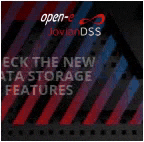

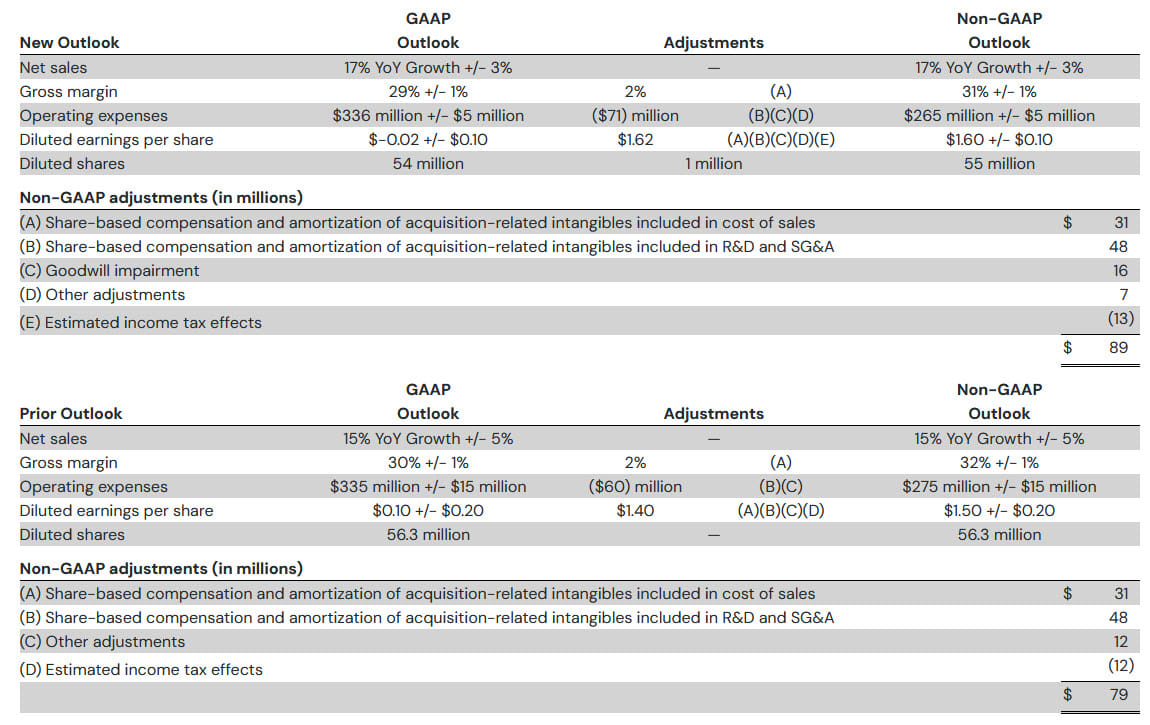
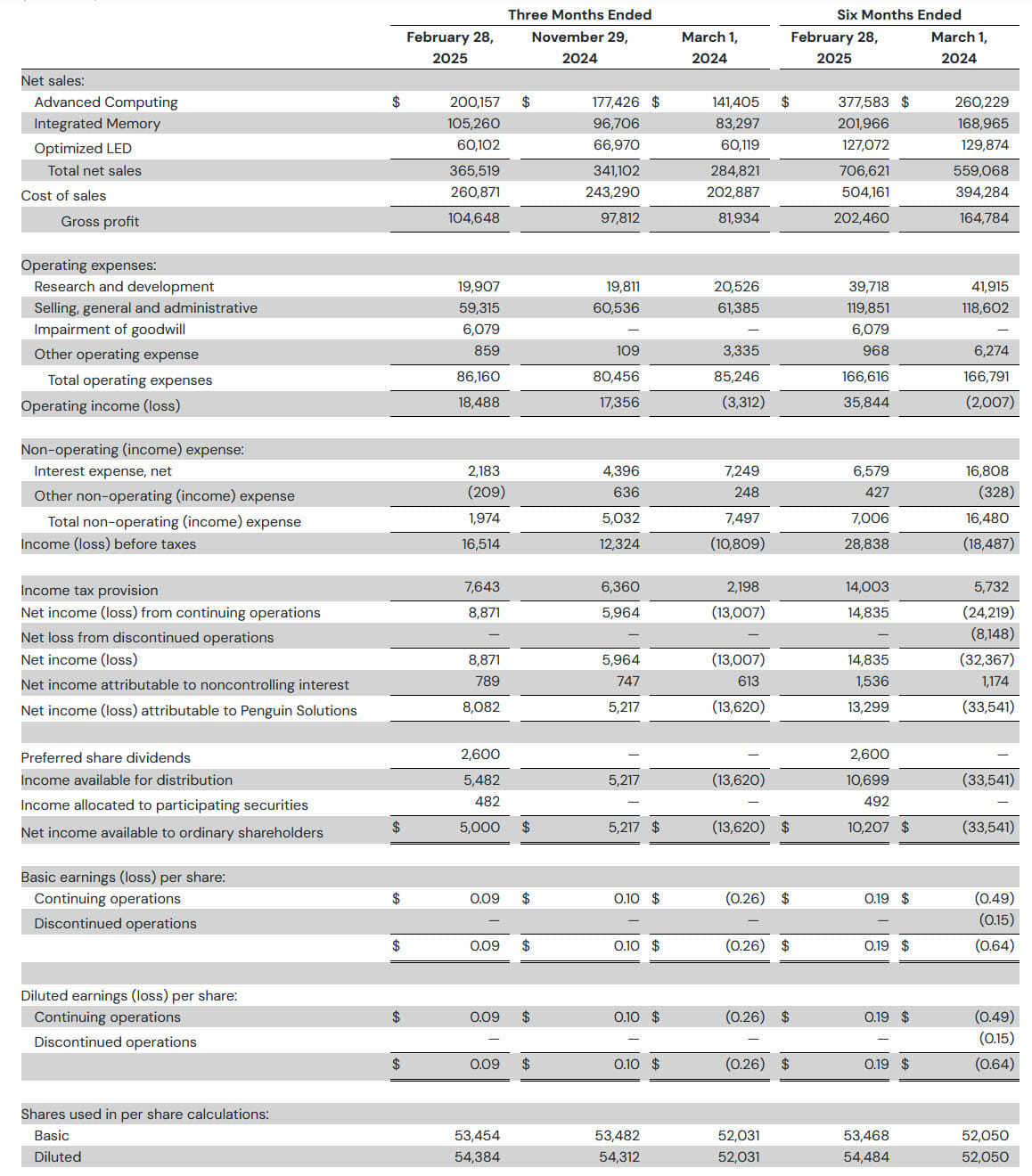
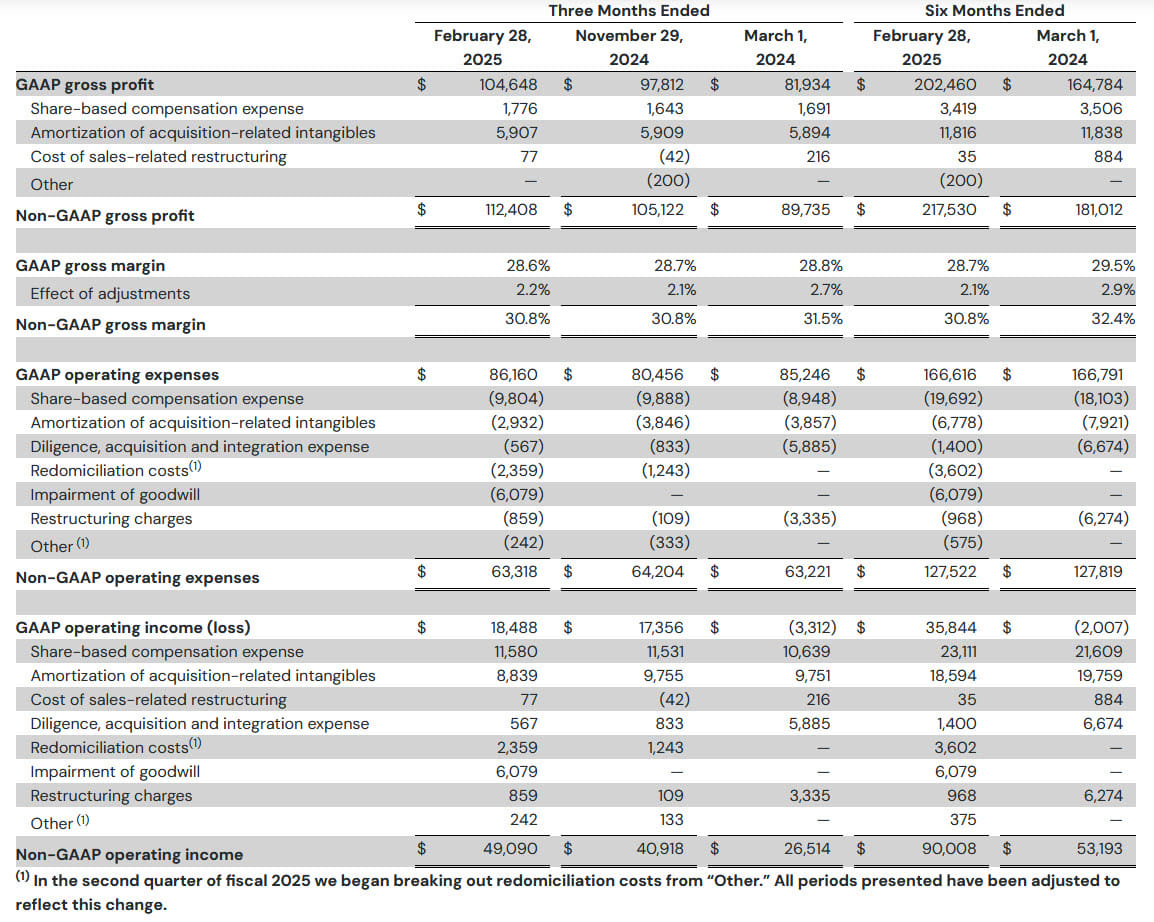
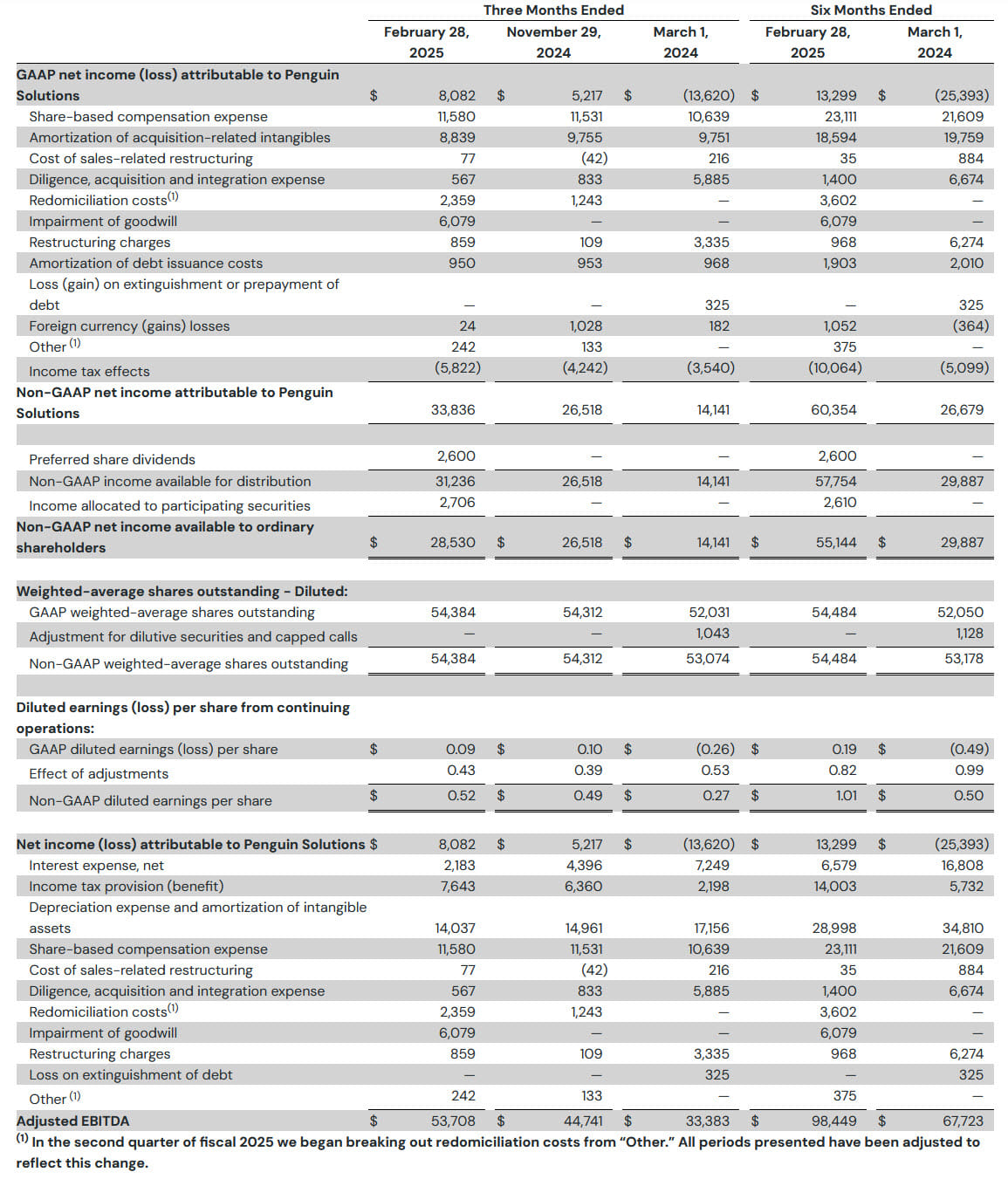
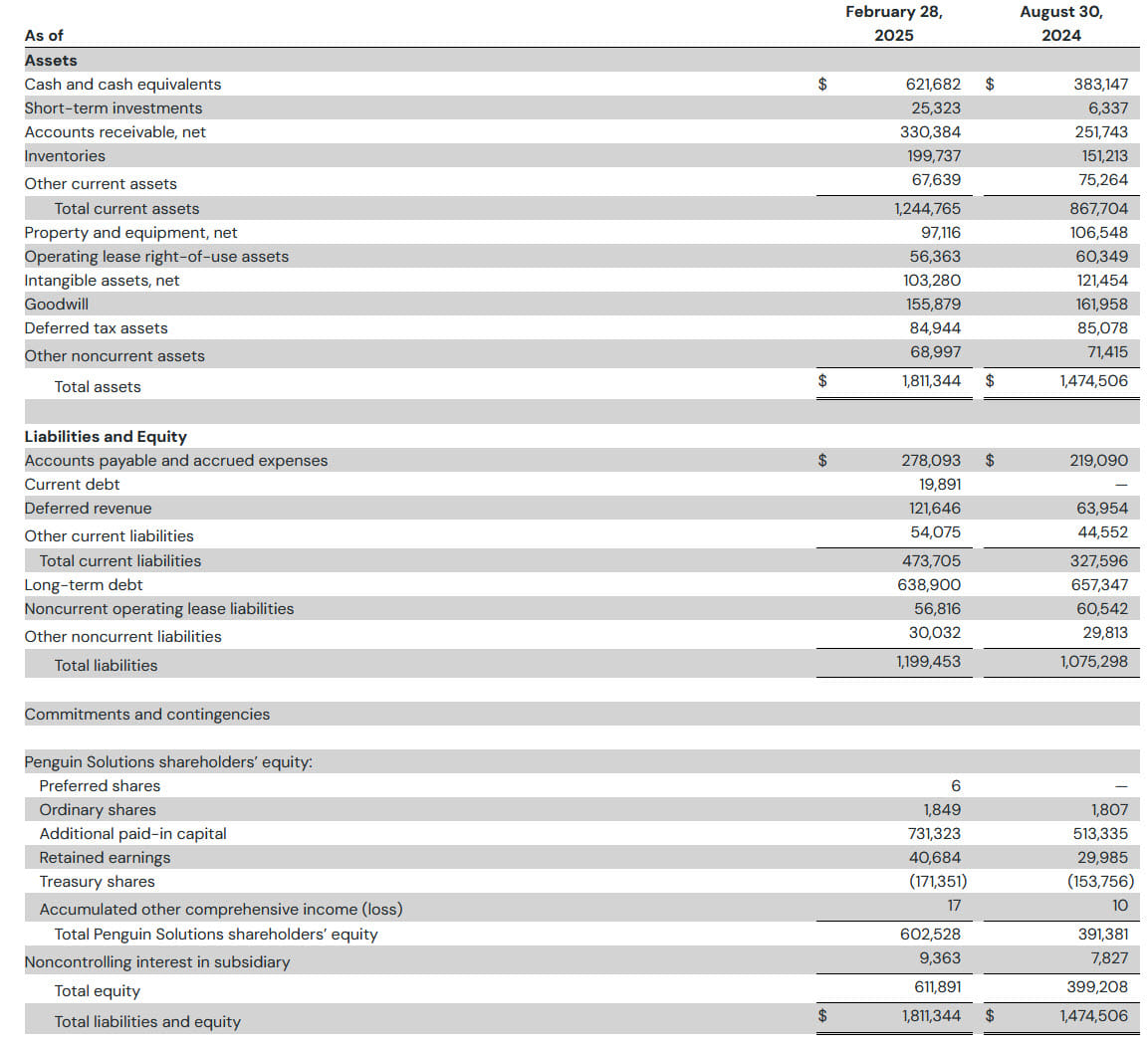
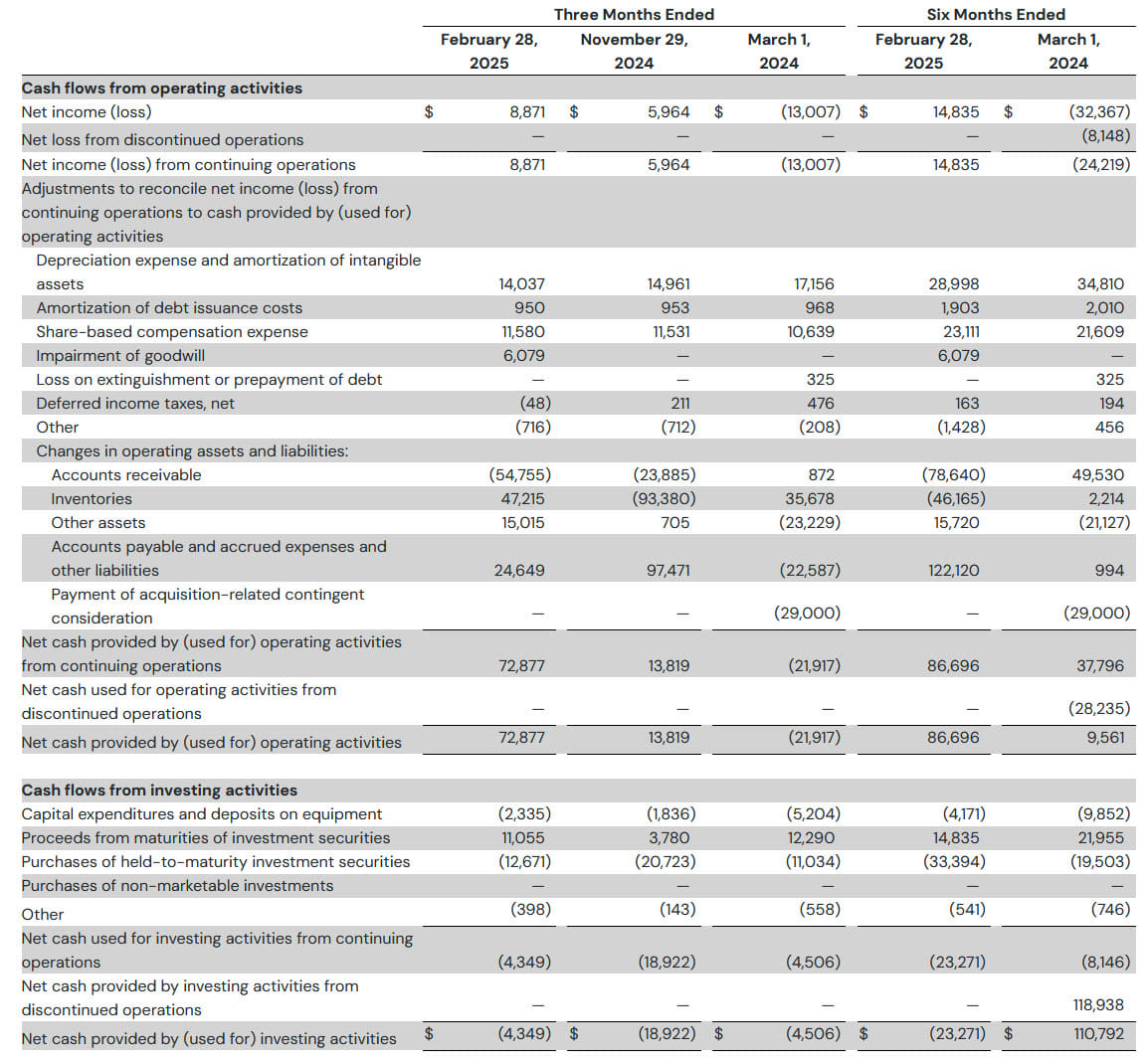
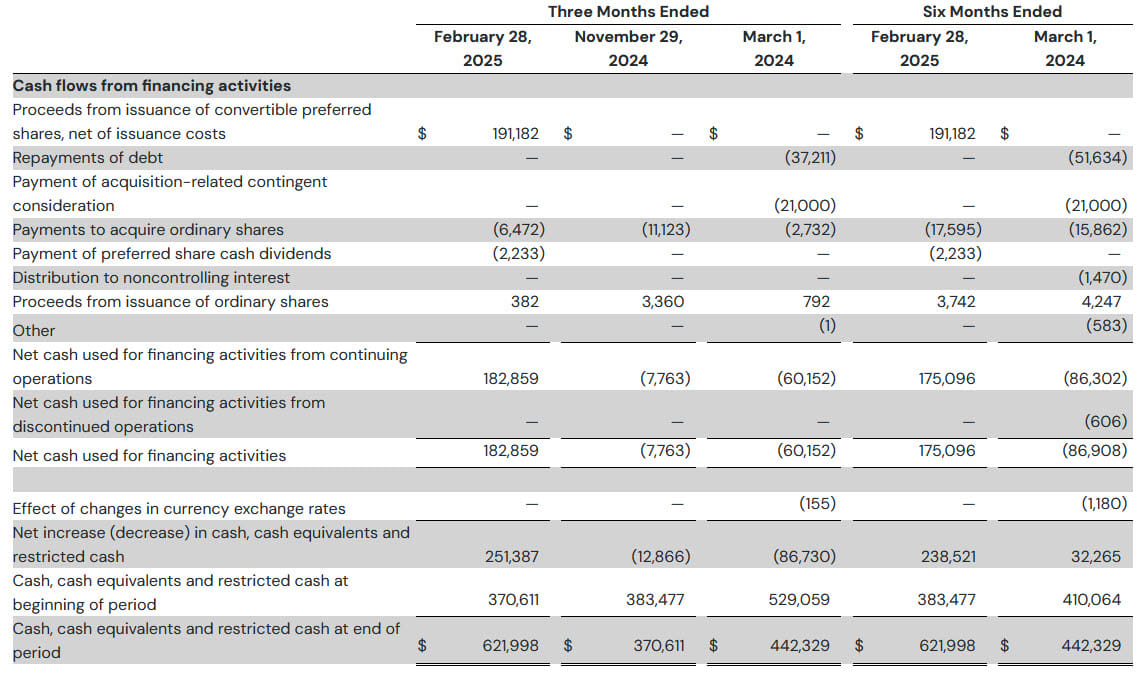






 Subscribe to our free daily newsletter
Subscribe to our free daily newsletter


